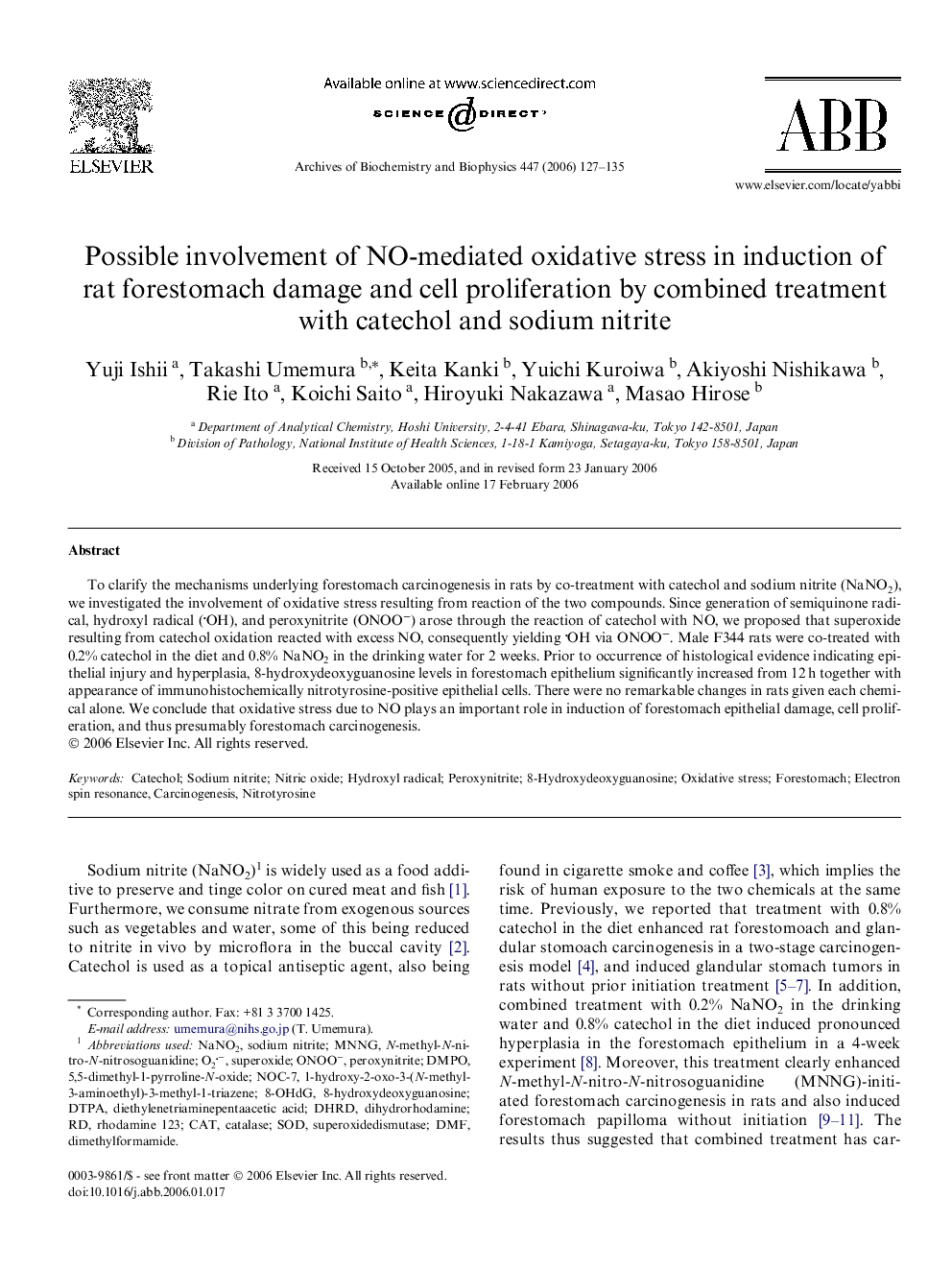| Article ID | Journal | Published Year | Pages | File Type |
|---|---|---|---|---|
| 1927519 | Archives of Biochemistry and Biophysics | 2006 | 9 Pages |
Abstract
To clarify the mechanisms underlying forestomach carcinogenesis in rats by co-treatment with catechol and sodium nitrite (NaNO2), we investigated the involvement of oxidative stress resulting from reaction of the two compounds. Since generation of semiquinone radical, hydroxyl radical (OH), and peroxynitrite (ONOOâ) arose through the reaction of catechol with NO, we proposed that superoxide resulting from catechol oxidation reacted with excess NO, consequently yielding OH via ONOOâ. Male F344 rats were co-treated with 0.2% catechol in the diet and 0.8% NaNO2 in the drinking water for 2 weeks. Prior to occurrence of histological evidence indicating epithelial injury and hyperplasia, 8-hydroxydeoxyguanosine levels in forestomach epithelium significantly increased from 12Â h together with appearance of immunohistochemically nitrotyrosine-positive epithelial cells. There were no remarkable changes in rats given each chemical alone. We conclude that oxidative stress due to NO plays an important role in induction of forestomach epithelial damage, cell proliferation, and thus presumably forestomach carcinogenesis.
Keywords
Related Topics
Life Sciences
Biochemistry, Genetics and Molecular Biology
Biochemistry
Authors
Yuji Ishii, Takashi Umemura, Keita Kanki, Yuichi Kuroiwa, Akiyoshi Nishikawa, Rie Ito, Koichi Saito, Hiroyuki Nakazawa, Masao Hirose,
